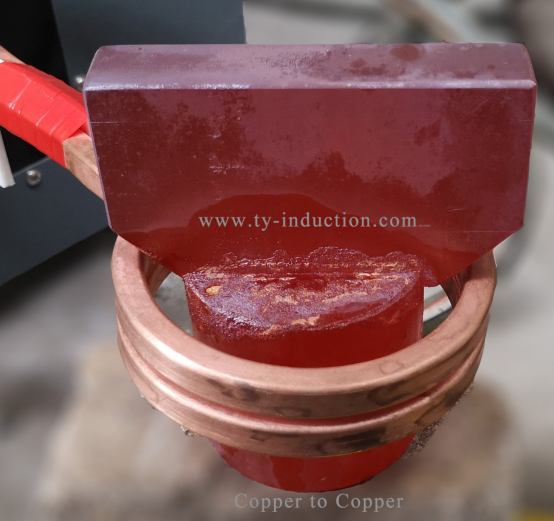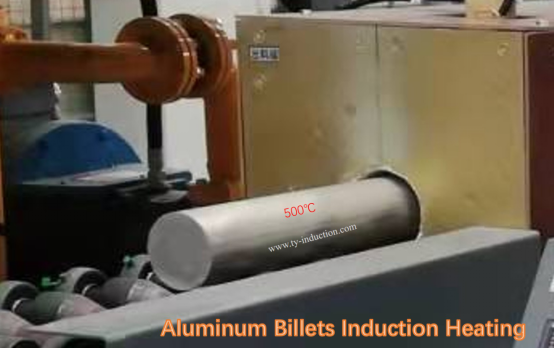Choosing the Right Induction System for Auto Parts: Steel vs. Aluminum vs. Copper
May 10, 2025
In the automotive manufacturing industry, efficiency, precision and material adaptability are crucial. As vehicles move toward being lighter, safer and more energy-efficient, auto parts manufacturers are turning to advanced technologies such as induction heating systems for various processes such as forming, bending, brazing and heat treatment.
However, selecting the right induction system is not a one-size-fits-all decision—the type of metal you work with plays a critical role. Steel, aluminum, and copper each have unique properties that influence how they respond to induction heating. This article explores how auto parts manufacturers can choose the right induction equipment based on their core materials.

Induction heating is a non-contact process that uses electromagnetic fields to heat metal parts quickly and precisely. The key advantage lies in its speed, control, and efficiency compared to conventional heating methods such as flame or furnace heating.
· Power Supply/Converter: Generates high-frequency current.
· Induction Coil: Creates the electromagnetic field.
· Cooling System: Maintains thermal stability.
· Control System: Automates and monitors process parameters.
Each element must be carefully selected and tuned based on the metal being processed.
Different metals react differently to induction heating due to variations in electrical resistivity, magnetic permeability, and thermal conductivity.
Metal | Electrical Resistivity | Magnetic Permeability | Thermal Conductivity |
Steel | Moderate | High (ferromagnetic) | Low to moderate |
Aluminum | Low | Non-magnetic | High |
Copper | Very Low | Non-magnetic | Very High |
These properties significantly impact:
· How fast the metal heats
· The depth of heating (skin effect)
· Required power levels and frequency
· Coil design and system complexity
Steel is the most commonly used material in auto parts due to its strength, durability, and cost-effectiveness. Common parts made from steel include axle housings, rods, gears, crankshafts, and suspension components.
· Highly responsive to induction due to magnetic permeability
· Can be hardened selectively (surface hardening)
· Consumes less power compared to non-ferrous metals
· Axle housing induction forming
· Rod/bar induction hardening and tempering
· Chain induction hardening for gears and rollers
Steel processing benefits from low to medium frequency induction systems (1–100 kHz). Power supplies should offer precise temperature control and integration with quenching systems for hardening lines.

Aluminum is increasingly used in vehicles for lightweighting, improving fuel efficiency and EV battery range. It is used for heat shields, wheels, engine blocks, and transmission housings.
· Non-magnetic, so no hysteresis heating effect
· Low electrical resistivity—requires higher power
· Heats quickly and may overheat without proper control
· High thermal conductivity leads to rapid heat dissipation
· Induction brazing of aluminum tubes and fittings (common in HVAC systems in EVs)
· Pipe and tube bending systems for precision-formed aluminum fuel or coolant lines
Induction systems for aluminum require:
· High-frequency inverters (100–400 kHz) for shallow heating
· Advanced coil designs for even energy distribution
· Close-loop temperature control to prevent melting or softening
Induction Heating for Copper Auto Parts

Copper is used where electrical conductivity and thermal performance are critical—examples include connectors, terminals, wiring systems, and EV charging components.
· Very low resistivity → absorbs less energy
· Extremely high thermal conductivity → heat spreads rapidly
· Non-magnetic—no magnetic field benefit
· Requires extremely high power density and frequency
· Induction brazing of copper terminals and connectors
· Localized heating for electrical contact assembly
· Non-ferrous induction heating systems for pure copper alloy treatment
· Ultra-high frequency induction systems (200–800 kHz)
· Custom coils with tight coupling to maximize efficiency
· Often integrated with protective gas chambers during brazing to prevent oxidation
Regardless of the material, every auto parts manufacturer should evaluate the following when choosing an induction system:
Production Volume and Cycle Time
High-speed lines (e.g., chain hardening lines) demand robust systems with automated part handling.
Required Heat Profile
Do you need deep, uniform heating or rapid surface heat-up? Material properties influence the optimal frequency.
Footprint and Integration
Can the system fit into your current production layout? Compatibility with existing equipment matters.
Energy Efficiency
Induction systems designed for your specific metal type minimize power waste and reduce operating costs.
Customization and Upgradability
Look for systems that allow modifications—such as switching coils, upgrading power modules, or adding automation.
· Electrification of vehicles is increasing demand for aluminum and copper processing.
· Smart induction systems with AI and IoT integration allow predictive maintenance and process optimization.
· Green manufacturing goals push adoption of induction heating for its low-emission nature compared to gas or flame systems.
· Modular designs are gaining popularity, enabling manufacturers to handle multiple materials with interchangeable coils and settings.
Choosing the right induction heating system is not just about the type of equipment—it’s about matching your process with your material. Whether you’re working with steel, aluminum, or copper, understanding how each metal interacts with electromagnetic heating is critical to optimizing productivity, energy consumption, and product quality.
Auto parts manufacturers looking to remain competitive and future-ready must invest in material-specific, customizable, and high-efficiency induction systems. Collaborating with an experienced induction equipment provider, TY INDUCTION, who understands your application needs will ensure long-term success in your manufacturing journey.
Hot Products
Contact Us
Enquiry hotline:
+86 135 4128 7190
Email:
Address:
No.18,14th Floor, Building 2, No. 169 Zhongli Road, Banzhuyuan Subdistrict, Xindu District, Chengdu, Sichuan, China, Code:610000
